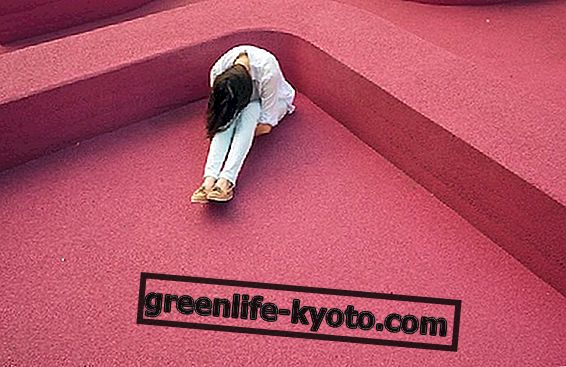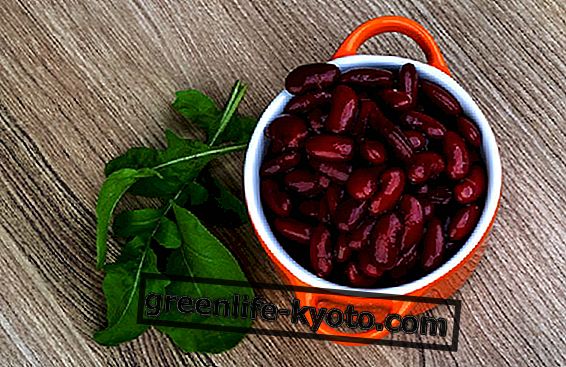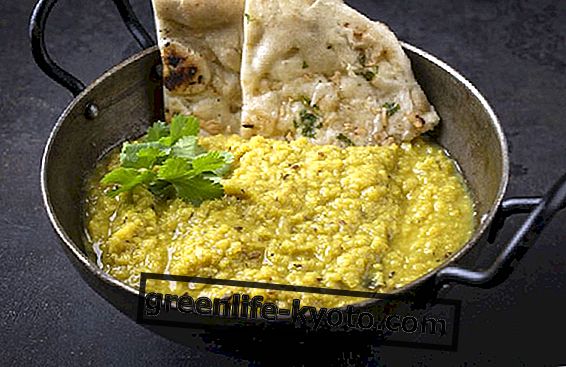
With his book Gioia Vegan Luisa, graphic designer and illustrator by profession, passionate about vegan, vegetarian and natural cuisine, yes ink flows, but it also opens the doors of her home, in particular of the mountain restaurant where, with her mother, she prepared typical Friulian dishes from the border, from the "zlicniki", to the "brovada" to the "stakanje", adding now a pinch of modernity, always with a view to a healthy and complete diet.
This is not another book on vegan cooking
Leafing through the pages of Gioia Vegan you will read vegan recipes that are not original, but " come from the principles of natural nutrition, from the habits of farmers of the past and from macrobiotics ".
These are a few simple foods, light recipes that will form a "healthy and clean" dish, integral and not artificial. Dishes that do not therefore only satisfy the throat or palate and provide calories, it is important to clarify it, but they really nourish them deeply.
From the "how" is cultivated to the "how" is cooked, the spirit with which the products that end up in the body are enriched represents an added value to the morsel on the fork.
The proposed recipes become special if, as the author states, we use products grown with love (permaculture, synergistic or biodynamic garden, for example); if you avoid products that are too processed at the industrial level as much as possible, always remaining active on the side of correct information in this regard; if the palate is re-educated to appreciate clean, raw, uncontaminated flavors. In fact, to paraphrase Luisa " Food is not thrown into garbage and garbage is not food ".
Try also fusion-vegan cooking recipes
18966.jpg "data-type =" article_show ">
Vegan recipes and ideas to experiment
The book opens with a section dedicated to sauces, hot sauces and cold sauces, from the classic base to prepare vegan mayonnaise, in the spicy version as well, to the most original and nutritious sauce with yeast and rocket. Luisa also gives space to her personal recipe for vegan béchamel.
We then move on to appetizers : canapés with vegetables - the appealing and unusual fennel-walnut pairing is noticeable -, then the peculiarity of the use of bear 's garlic stands out (if you haven't, run for cover and find a corner to plant it because it really is a wonderful herb), of various herbs and vegan mozzarella.
Among the proposals there is also the summer and winter version of the vegetable strudel, the use of tofu for flavored skewers and very special salads, such as fresh beetroot with pink sauce . The zucchini mousse flans in aromatic sauce do not go unnoticed in closing.
Here we are with pasta dishes . It starts with the "spoon" first courses, with the nice palette of the various "single color" soups (its professional deformation is evident here!) And the traditional Friulian soup of barley and beans, in which there are more than one of the tricks of the craft handed down from grandmothers to make it really perfect. The following recipes are based on other cereals, such as buckwheat, rye, spelled, soft wheat and brown rice, also combined with wild flowers from the area, such as the versatile elder flowers.
It is then time for food as simple as it is important: bread . The proposal is that of a simple basic dough, easier to make than the use of sourdough, with the variants of buckwheat, wheat, corn and light and pale Arabic bread .
This is followed by a special section dedicated to pasta, which is particularly striking for the various versions of pesti: vegan pesto, pistachio pesto, with nettles and cashews, rocket, thyme and sunflower seeds.
The couscous is not lacking, so as to give an ethnic touch to the book, perfumed here and there also by ginger, cinnamon, curcuma, curry and various spices. Returning to the tradition of the first Friulians, Luisa confesses at the end of the section the recipe for the gnocchi di farina, the " zlicniki ", a poor dish from the north east, where Friuli borders on Slovenia.
The main courses are based on legumes, salads and vegetables prepared according to tradition. Stewed and pureed hulled legumes, alternated with tofu, seitan and tempeh preparations, to be accompanied by various types of salads, including the unusual " pressed salads " and vegetable salads.
The Friulian " brovada " arouses curiosity for its preparation, made from turnips fermented with salt and marc, red in color and with thin strips. While the " stakanje ", literally crushed, is a kind of mashed potatoes, with various crushed vegetables and onions sautéed with vinegar.
In conclusion, the desserts : veg and brisée cakes without eggs, jellies, sauces, fruit cakes, puddings, semifreddi and strudel. A beautiful parenthesis in the queue is dedicated to the creations of the chef, master of macrobiotics, Cosimo Bicchierri, "musician of flavors", who gives a superb cream of millet with lemon and "kauten" of Luigia grass.
Produced by the publishing house Punto d'Incontro is created by Luisa Tomasetig; was released in December 2014.













